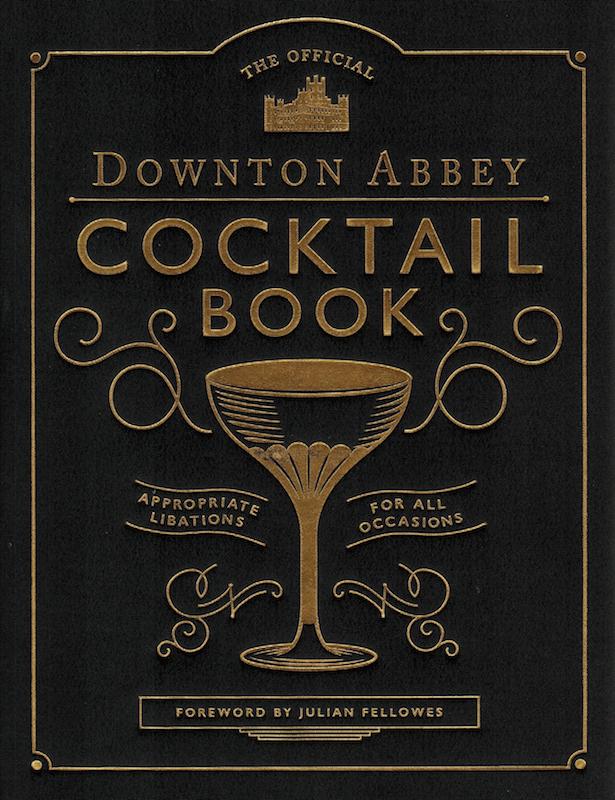The TV series “Downton Abbey,” a British-American production comprising fifty-two episodes across six seasons, captivated audiences from September 2010 to Christmas 2015 (followed by two standalone films, with the latter premiering in Slovak cinemas around April this year). It narrates the tale of Abbey estate owners, their staff, and friends from 1912 to 1926. Considering that the first official cocktail party, hosted by writer Alec Waugh, was held in London only on April 26, 1924, the creation of “The Official Downton Abbey Cocktail Book” stands as a pioneering act.

The lavishly detailed book is introduced by the TV marathon’s screenwriter, Julian Fellowes. Acknowledging the complexity of the historical period in terms of cocktail culture, Fellowes reminds us that the first series inevitably featured Scotch whisky, sherry, port, some punch, and, notably, champagne. In the second and third series, set post-World War I, mixed drinks began to cautiously emerge, with the shaker making its appearance towards the cycle’s end, after nearly fifty hours of total broadcast time. Historian Annie Gray recalls the historical context: Victorian gastronomy didn’t recognize cocktails in an aperitif position.
The book surprises readers immediately with its first recipe for the Old Pal, a concoction unknown at the story’s time. The explanation is tucked away on the publication’s very last page in small print under “Lou Bustamante, author of the Complete Cocktail Manual.” Bustamante, an American much like Sparrow Robinson, a New York Herald Tribune correspondent in Paris, to whom the recipe was originally attributed by Harry MacElhone, owner of the notorious Harry’s New York Bar.
The book’s link to the TV series is further established through striking cocktail photographs, images of actors holding or preparing mixed drinks, and snippets of dialogues pertaining to the drinking customs of the era. But there’s something that catches not only the layman’s (and viewer’s) attention but also the professional bartender’s: variations on classic recipes, often referred to as twists.
In the first chapter – “The Library” – twists on the Negroni are presented. “The Cheerful Charlies” retains Campari Bitter in the recipe, while the other ingredients differ—rye whiskey and cognac replacing gin and orange liqueur added on top. “The Boulevardier,” I don’t need to describe; it has recently become a fixture on many bar menus.

Is it absinthe time?
Aware of the attention recently given to absinthe by the so-called Generation Z, Bustamante includes several recipes featuring the green fairy. “London Cocktail” involves gin, absinthe, sugar syrup, and orange bitters; the author notes that absinthe was never banned in the United Kingdom. Significantly more sophisticated is the “Tuxedo Cocktail Nº 2” (gin, dry vermouth, maraschino, absinthe, orange bitters); the author overlooks the fact that the recipe was published in 1930 in The Savoy Cocktail Book. The “French 75” (a familiar recipe; Lou adds orange bitters).
Handle with caution, please!
Some of the author’s ideas are – politely put – debatable. The Sidecar with a sugar crust on the glass crosses the line of acceptability, reminiscent of serving vermouths at weddings in 1970s Czechoslovakia. Cinzano Bianco without a sugar crust? Unthinkable, the groom would have said back then. A crust on the glass with the “Turkish Attaché” can be tolerated since it refers to the “Brandy Crust” (the image is known from Harry Johnson’s historically second collection of mixed drink recipes), where this glass decoration is standard.
Defense of classics
So, what is the book’s contribution? It might seem like a challenging question to answer, but it isn’t! It crucially reminds readers—amateurs, professionals, or just cocktail enthusiasts—of our bar ancestors’ legacy. Drinks that have been with us for decades, sometimes centuries, are being pushed into the background in the current age of signature cocktails. What remains is essentially this: to delve into these notes and carefully replay one composition after another. That’s how I recently tested Tuxedo Nº 2. I’ve been mixing this cocktail once or twice a week ever since.
Irresistible!





